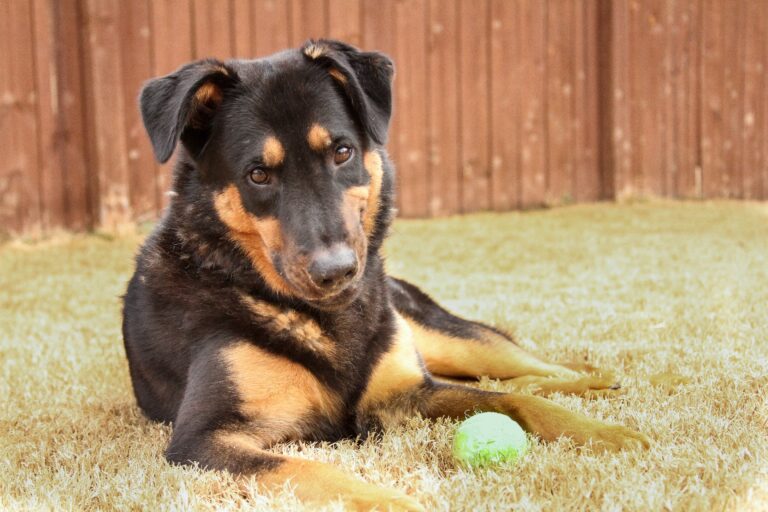German Shepherd Rottweiler Mix Dog Breed Guide
The German Shepherd Rottweiler Mix is a fascinating blend of two well-respected dog breeds. Combining the best traits of the German Shepherd and the Rottweiler, this mixed breed is large, strong, and fiercely loyal. Understanding this mix’s personality and potential health is crucial for those who own or plan to own one.
The well-being of this crossbreed relies on informed ownership, considering their complex heritage. They are as capable and adaptable as they are impressive in stature. Engaging in responsible breeding is essential to ensure a positive outcome for this mixed breed. Early socialization is also crucial to developing a well-adjusted dog.
Owning a German Shepherd Rottweiler Mix is a long-term responsibility that involves creating a supportive environment for this powerful and devoted companion.
Key Takeaways
- Crossbreed’s health and personality need understanding.
- Responsible ownership ensures crossbreed’s positive development.
- Supportive environment is key for the mix’s well-being.
Quick Facts
The German Shepherd Rottweiler Mix is a robust dog, typically weighing around 100 pounds and standing 22 to 27 inches tall. Its thick coat comes in shades of black or brown with possible tan, brown, or grey patterns.
This sizeable mixed breed combines the muscular physiques and active nature of its German Shepherd and Rottweiler ancestors. Originating in the 1990s, this crossbreed has gained popularity for its devotion, guard instincts, and adaptability to various roles, including law enforcement and military work.
Owners of this mixed breed should commit to thorough socialization and regular training to manage their instinctive guard tendencies and ensure a well-balanced temperament. The breed’s considerable size and vitality make it unsuitable for small living spaces. They thrive in an environment with plenty of room for daily physical activity and mental engagement.
German Shepherd Rottweiler Mix Dog Breed Pictures
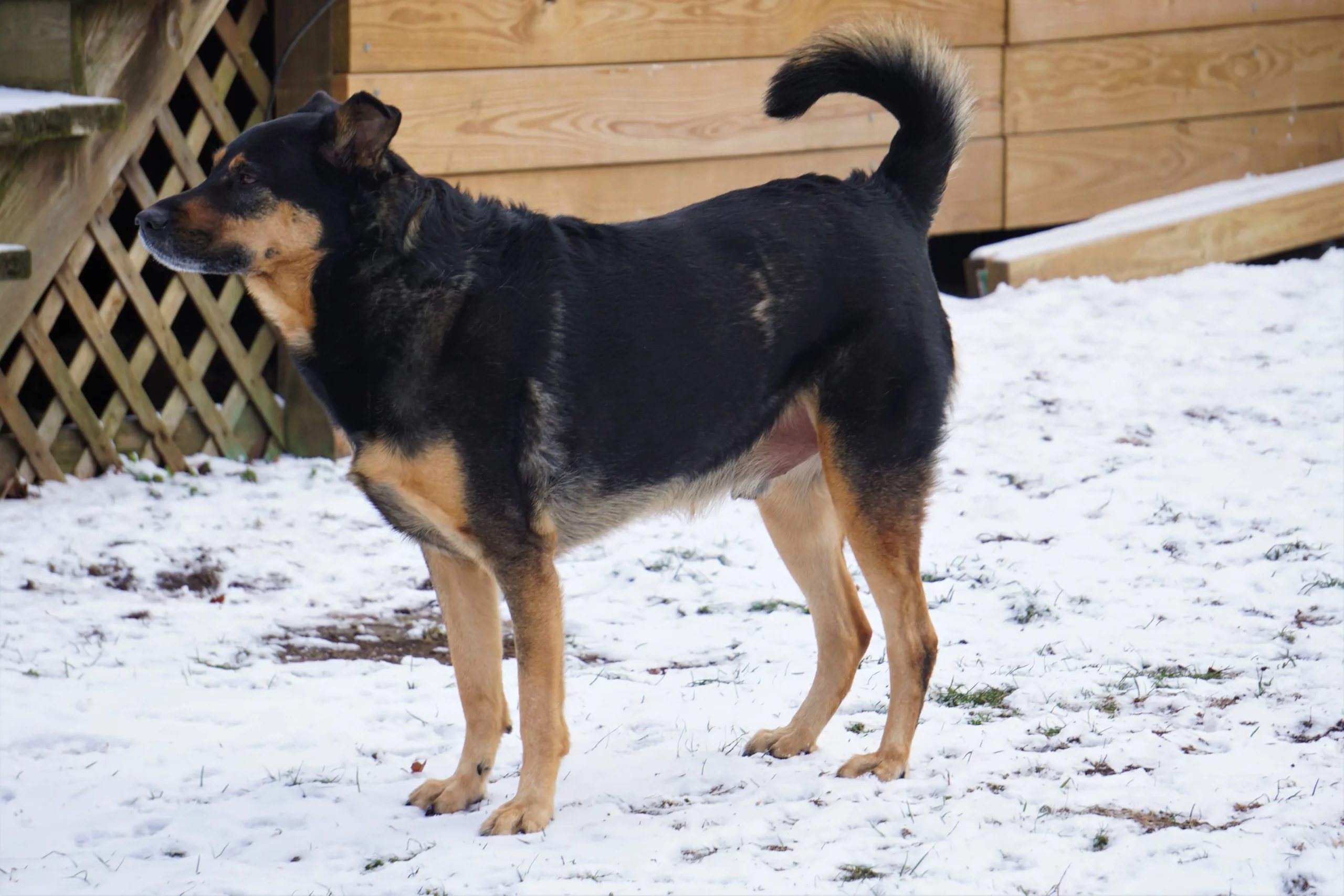
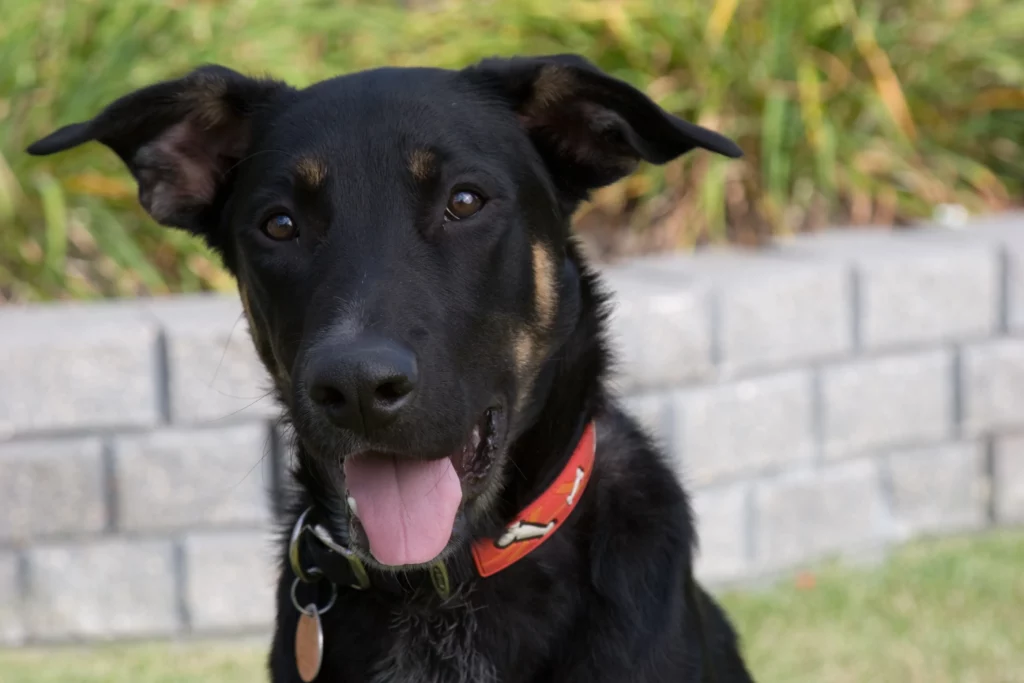
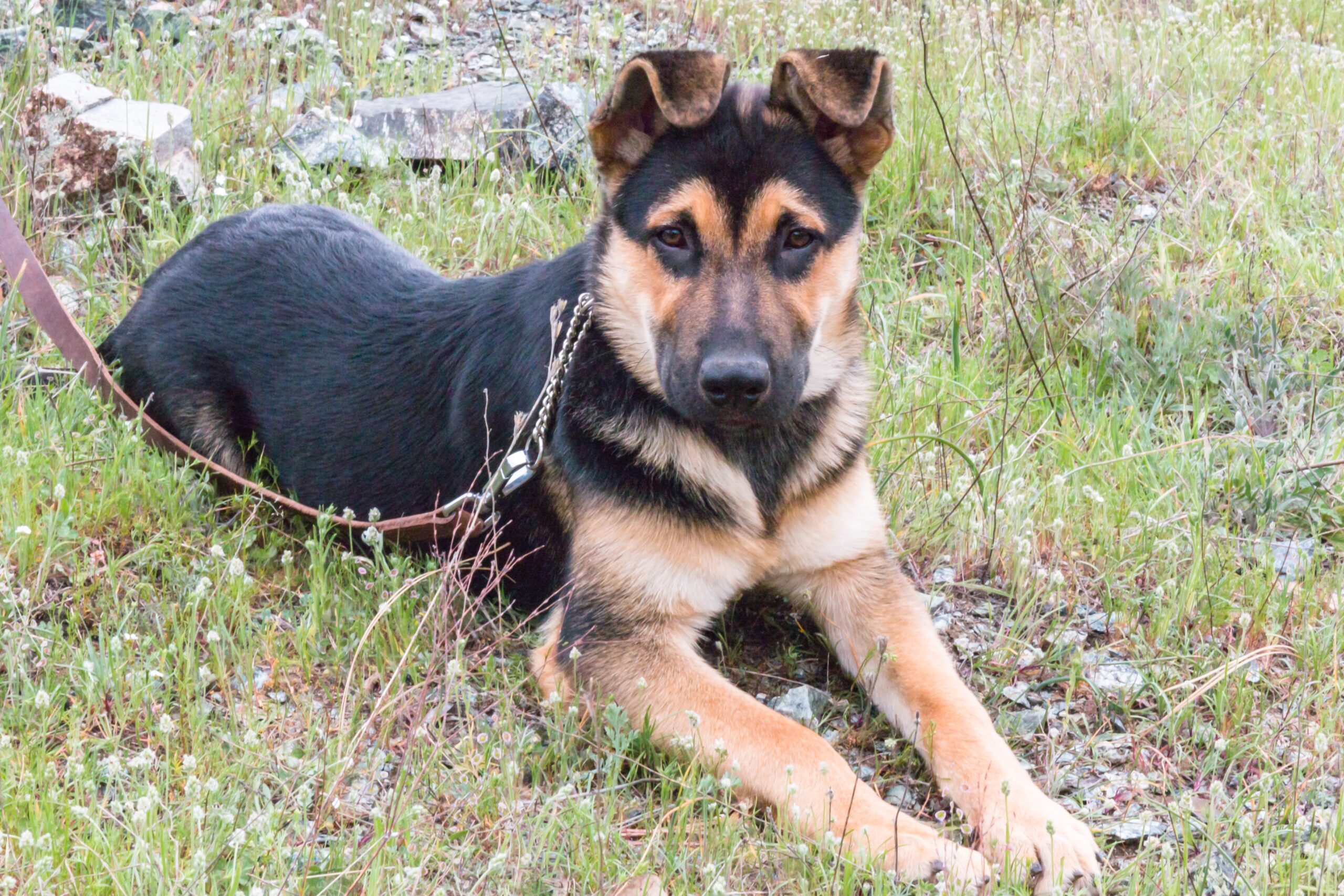
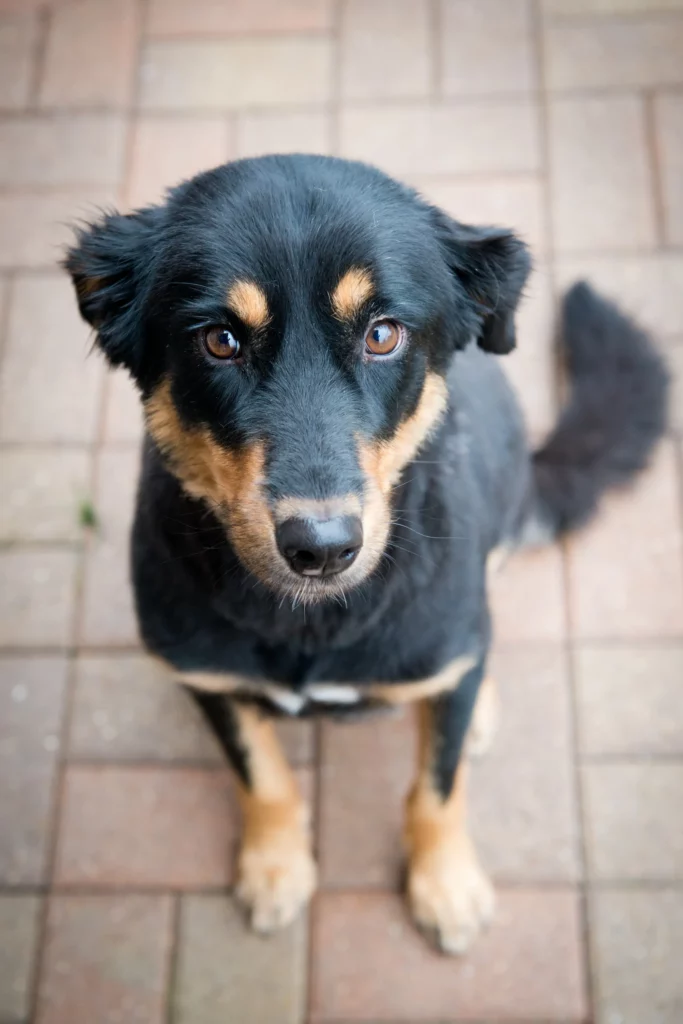
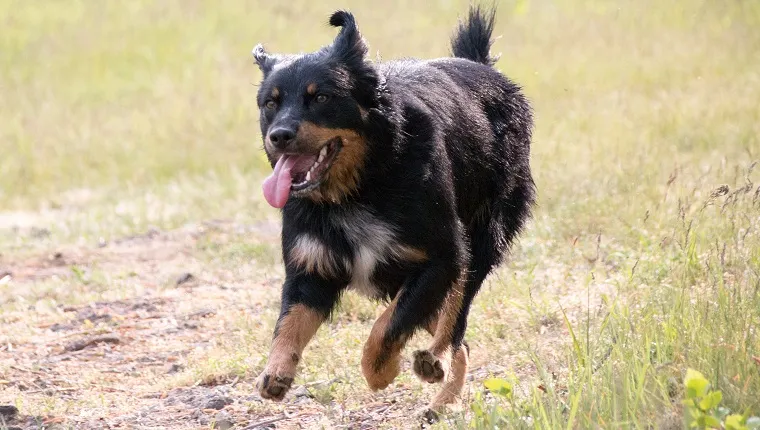
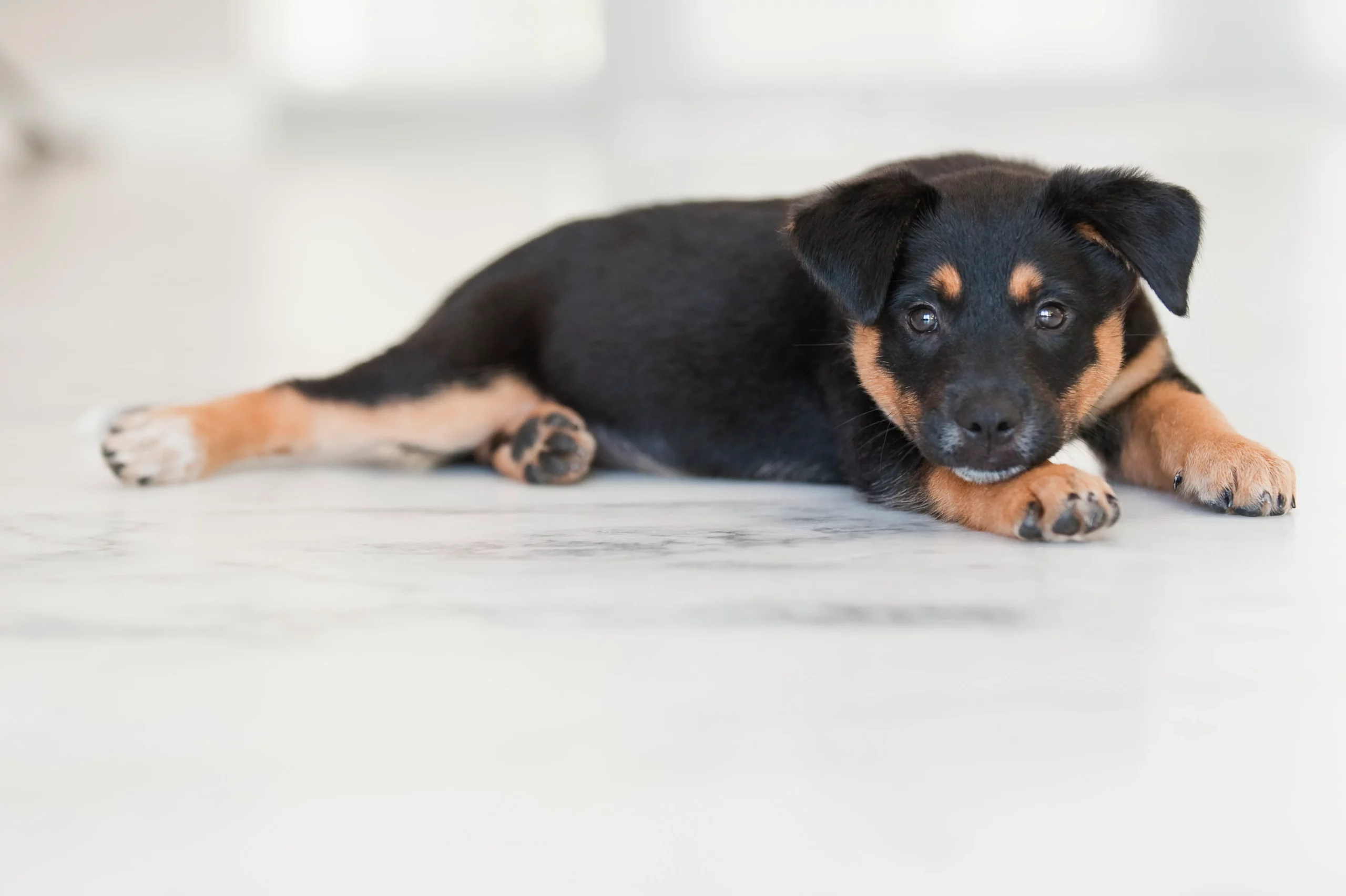
Overview
Merging the lineage of German Shepherd and Rottweiler breeds, the German Shepherd Rottweiler Mix embodies a fusion of characteristics that cater to various roles, from companionship to specialized work duties. This mixed breed dog inherits its progenitors’ energetic and loyal temperament, making it well-suited for protective functions and as a devoted companion.
As a member of large dog breeds, the German Shepherd Rottweiler Mix’s coat can vary, reflecting traits from either parent, requiring regular grooming to maintain its condition. Despite being affectionate and protective, potential owners must be vigilant of the breed’s predisposition to hereditary health issues, including joint degeneration and heart defects.
Ensuring their well-being demands a commitment to rigorous exercise, mental stimulation, and continuous health monitoring through regular veterinary care.
Key Traits
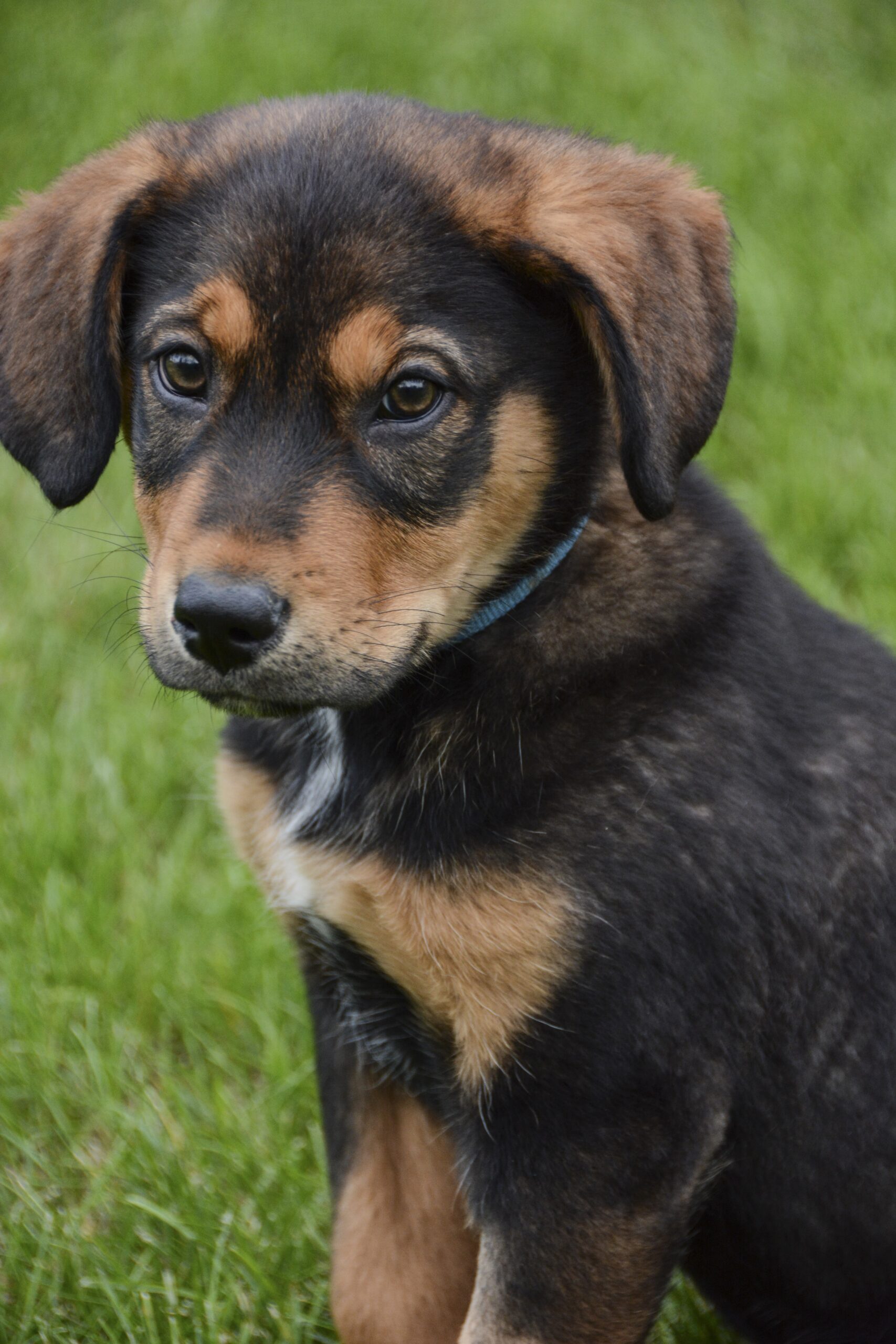
The German Shepherd Rottweiler Mix is a solid and muscular dog, showcasing a range of coat colors that reflect its mixed ancestry. These dogs are known for their sharp intelligence, inherited from the Rottweiler and German Shepherd lineages. They require plenty of exercise and training to stimulate them physically and mentally. Known for being great with families, they show deep loyalty and an instinct to protect their loved ones.
Owners should keep in mind that this hybrid can have health issues such as joint dysplasia and heart problems. It’s crucial to provide them with a spacious environment because of their size and energy levels. They thrive on affection and benefit from socialization starting at a young age. They need daily activities that challenge their bodies and minds for their well-being. Regular check-ups with a vet are necessary to monitor and manage potential health risks.
| Aspect | Detail | Implications |
|---|---|---|
| Size and Appearance | Large and muscular with a varied coat | Thoughtful, faithful, and protective |
| Temperament | Smart, faithful, and protective | Must be socialized early |
| Exercise Requirements | Very active | Daily exercise and brain games |
| Health Concerns | Hip and elbow problems, heart issues | Needs ongoing vet care |
History of the German Shepherd Mix
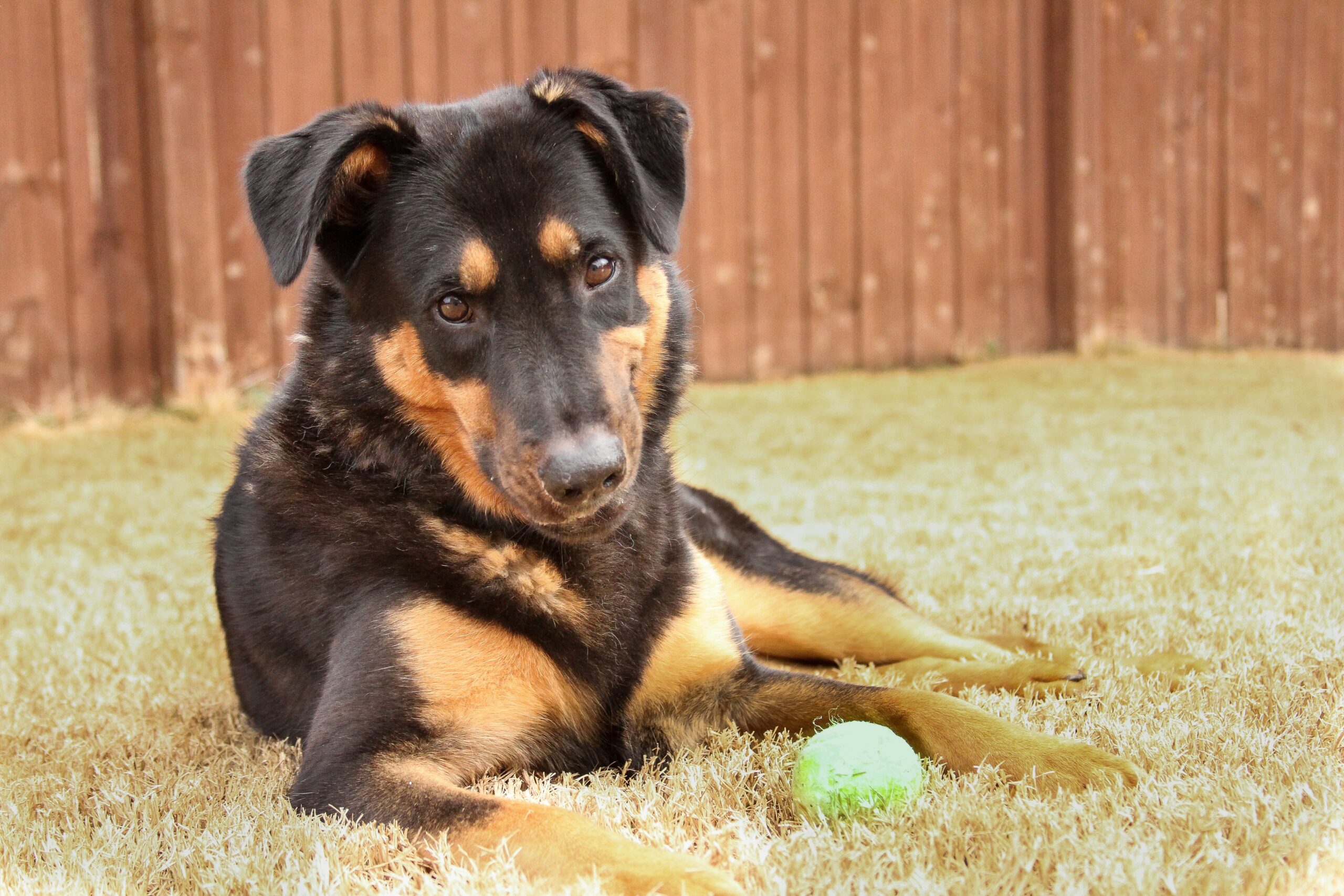
The German Shepherd Rottweiler Mix is a unique breed that emerges from the careful combination of two iconic dogs. This crossbreed’s intricate genetic background is fascinating and worthy of in-depth study. By tracing the roots of this mix, we can understand the creation of a dog with a set of traits that are a product of both German Shepherds and Rottweilers.
Breed Origin History
The creation of this hybrid started within the dog breeding community. Records show how the breed has developed over time. The spread of this mix across different regions and the reasons breeders choose to create this mix are also part of this history.
Heritage Traits Blend
The genes from both parent breeds shape the mix’s physical features, such as size, fur, and body structure. The behaviors and instincts of these dogs are influenced by their ancestry. Selective breeding plays a role in shaping their personalities and instincts.
Mix Lineage Overview
Analyzing the pedigree reveals how much each parent breed contributes to the mix. Dominant and recessive genes affect the appearance and temperament of these dogs. The mix’s long-term health is connected to its genetic background.
In exploring the German Shepherd Rottweiler Mix, we’ve seen how merging two powerful breeds can lead to a dog with a robust physique and a dynamic personality. Breeders have been motivated by the desire to combine the best traits of both species, which has led to the widespread popularity of this mix. The hybrid benefits from the strengths of German Shepherds and Rottweilers, resulting in a dog that is as capable as it is loyal. The mix’s health is crucial, ensuring the breed thrives for generations.
Breed Guide Origin History
The German Shepherd Rottweiler mix, also known as the Shepherd Rottie Mix, is a crossbreed that emerged in the late 1800s. This hybrid dog combines the strengths of two well-respected working breeds: the Rottweiler and the German Shepherd.
The goal of creating this mix was to blend the intelligence, power, and devotion the Rottweilers and German Shepherds were known for. Historically, these breeds have excelled in roles like herding, security, and service animals. This mix was intended to bring the best of both worlds together, resulting in a multifaceted and dependable pet.
Studies on breed genetics indicate that this mixed breed might show greater hybrid vigor, which can lead to a lower risk of some health issues affecting purebred parents.
Heritage Traits Blend
When you look at the heritage traits of the mix between a German Shepherd and a Rottweiler, you see a unique combination of features from two impressive dog breeds. Known as the Shepherd Rottie Mix, this hybrid dog brings together the muscular build of its parents. It sports a solid, muscular body and a coat that may be black, brown, or a mix, with patterns that remind you of both the German Shepherd and the Rottweiler.
Being a blend of working dogs, the Shepherd Rottie Mix is brilliant and easy to train. These dogs also have an instinct to guard and protect, which makes them excellent for police work, military roles, or as service animals. They form strong bonds with their owners and show great loyalty.
It’s essential to socialize them from a young age and keep their minds active to maximize their abilities.
Mix Lineage Overview
Exploring the heritage of the German Shepherd Rottweiler Mix, we find a blend of two prestigious breeds known for their protective abilities. This mix, known as the Shepherd Rottie Mix, merges the intelligence and adaptability of the German Shepherd with the strength and guard instincts of the Rottweiler.
The Rottie Shepherd Mix inherits robust features from its parent breeds, like powerful legs and an impressive stance, often weighing about 100 pounds, resulting from careful crossbreeding.
This mix is crafted to combine the loyal temperament and defensive skills of both original breeds, making it an excellent choice for work in law enforcement, the military, and as service animals.
They need thorough socialization, comprehensive training, and mental stimulation to realize their highest capabilities.
Rottie Shepherd Physical Dimensions
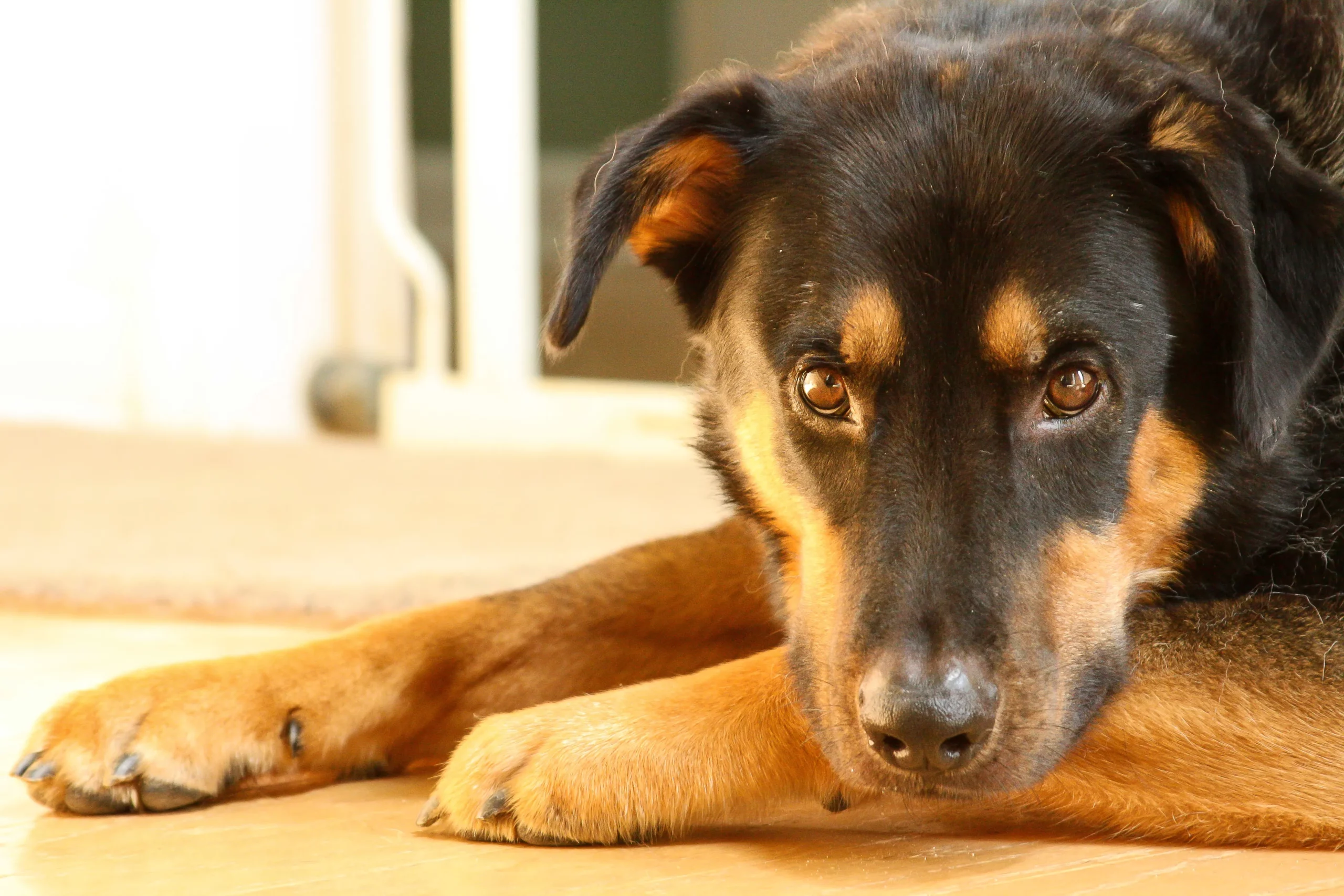
The German Shepherd Rottweiler Mix boasts a solid frame that showcases power and skill stemming from its genetic background. Understanding this breed’s physical presence involves examining critical measurements like height and weight, which vary based on gender, diet, and activity levels.
This mix’s appearance and fur are shaped by a rich blend of genetic factors, detailed as follows:
- Height Range
- Males stand about 24-27 inches tall
- Females are generally 22-25 inches in height
- Weight Range
- Male dogs often tip the scales at 90-110 pounds
- Female counterparts usually weigh in at 75-95 pounds
- Body Structure
- The breed features a well-sculpted muscle structure, a broad chest, and a sturdy back.
- Its hind legs display considerable power, suited for endurance and strength.
- A distinctive snout length equips them with a sharp sense of smell
These dogs inherit traits from German Shepherds and Rottweilers, leading to their impressive and functional physique. They require a balanced diet and regular exercise to maintain their health and form.
Average Height Range
German Shepherd Rottweiler mixes stand tall, ranging from 22 to 27 inches at the shoulder. They are on the larger side of dog breeds, categorized as large-sized due to their considerable height. This hybrid dog boasts a solid and muscular build, combining the sizeable characteristics of the German Shepherd and Rottweiler breeds. Male Shepherd Rottweiler mixes in size and weight often grow more significantly than their female counterparts.
Having a German Shepherd Rottweiler mix means accommodating its need for space and daily activity. These large dogs thrive with plenty of room and regular exercise to stay fit and happy. It’s essential to understand their size needs to provide a living space where they can move around quickly. This is vital for their physical activity and overall health, especially for active breeds like them.
Typical Weight Span
The German Shepherd Rottweiler mix, often called a Rottie Shepherd, is a large breed that usually tips the scales at 75 to 115 pounds. These dogs combine a Rottweiler’s strength with a German Shepherd’s agility. Owners of this hybrid should prioritize regular exercise to keep their dogs healthy and avoid the extra weight that could lead to health problems.
Due to their mixed lineage, the weight of these dogs can vary slightly. This variation can be due to different genetic factors and their environment. To prevent any health issues related to their size, owners must keep up with regular vet check-ups. This ensures that their Rottie Shepherd stays in good shape.
Body Build Features
The German Shepherd Rottweiler Mix, often known as the Shepherd Rottie, is a large and muscular dog breed with an impressive stature. These dogs typically stand between 22 and 27 inches tall and weigh nearly 100 pounds. They boast a robust physical appearance, long snouts, and powerful back legs.
Shepherd Rotties have coats that are medium to thick, which means they shed a lot and require frequent grooming.
Shepherd Rotties need plenty of space to move around because of their size and high energy levels. They are not suited for small living areas. These dogs need one to two hours of exercise daily to stay healthy. It’s also essential to take them for regular vet check-ups to monitor for common health issues like hip and elbow dysplasia affecting their quality of life.
Coat Length Variability
The German Shepherd Rottweiler mix has a coat that varies in length from short to medium, with differences in density and texture. This reflects the unique genetic background of the mix, coming from its German Shepherd and Rottweiler parents.
These dogs usually have fur in shades of black and tan. Their coats might be thick and close or a bit less, depending on how much they shed. Depending on their inherited traits, some of these mixed-breed dogs might shed a lot or just a bit.
Regarding grooming, these differences in their fur mean that they need regular care. This helps control the shedding and keeps the coat looking good and healthy. Looking at their hair can give clues about their ancestry and what kind of grooming they need.
Color Patterns Commonality
German Shepherd Rottweiler Mixes are known for their distinctive black and tan color patterns, a legacy of their purebred parents. These dogs, often called Rottie Shepherds, showcase a variety of colors, but black remains a prevalent feature, thanks to their German Shepherd and Rottweiler heritage.
The variety in their coat colors depends on the genetic combination of the alleles responsible for fur color and pattern. It’s common to see these dogs with shades like grey, sable, red, and sometimes even cream or white. Their unique markings add to their visual appeal and make each dog’s appearance one-of-a-kind.
Temperament and Behavioral Traits
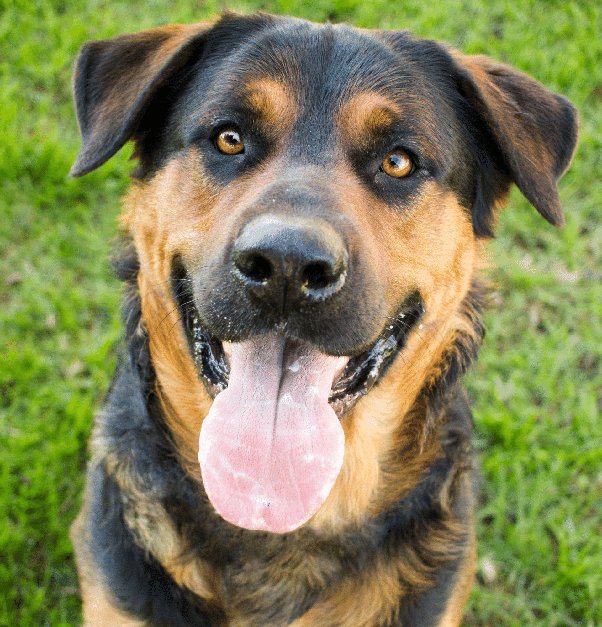
The German Shepherd Rottweiler Mix showcases diverse behaviors stemming from their heritage, which merges two distinct breeds known for their work ethic. Studies indicate these dogs may exhibit a broad spectrum of temperaments, from reserved and vigilant to warm and keen to please. This variety requires a thoughtful approach to training and behavior management.
The key behaviors to consider include:
Temperament Overview
Understanding these dogs begins with examining their natural tendencies. Their breed history shapes The mix’s behaviors, highlighting the need to understand how genetics may influence their actions. It’s also vital to consider how their surroundings and upbringing affect their demeanor.
Socialization Needs
Early development is a crucial time for these dogs to learn social skills. Introducing them to various situations and people can lead to well-adjusted behavior in the future. Sustained social contact is essential to ensure they remain well-behaved and adaptable.
Aggression Management
Recognizing what provokes aggression is the first step in addressing it. Employing methods to diffuse aggressive tendencies is essential, as is consistent, firm training to prevent such behaviors. This helps maintain a safe and harmonious environment for the dog and its human companions.
Temperament Overview
The German Shepherd Rottweiler mix inherits behavioral traits from its diverse genetic background. This intelligent breed combines the strengths of its parent breeds, creating a dog with robust guardian instincts and the ability to develop strong bonds with its owner.
Starting socialization and training early for these dogs is crucial to prevent standoffish or aggressive behavior. When raised properly, they show a loving and tender side, becoming great family pets. Yet, due to their guardian nature, they should be watched around older kids and other pets.
Their keen awareness and tendency to bark make them excellent watchdogs, always ready to alert their owners to any unusual activity.
Socialization Needs
The German Shepherd Rottweiler mix requires careful socializing from their early days to become well-behaved in various situations. Proper training is critical to managing their natural tendency to guard, which can lead to unwanted behaviors like aggression if not addressed.
To ensure they are friendly around kids and other pets, they should be introduced to new social environments gradually and positively. Exposing them to different types of people, places, and situations helps them adapt without fear. Regular and friendly encounters with various dogs and people are essential to preventing defensive or distant traits from developing.
This will help the dog to be confident and social.
Aggression Management
Training German Shepherd Rottweiler mixes to manage aggression effectively relies on more than just their early socialization. It’s about advanced training and getting to know their behavior signals.
Thorough obedience training that uses rewards can explain why a dog might be aggressive, like feeling protective, territorial, or trying to be the boss. These intelligent dogs need their brains kept busy, or they might start acting out because they’re bored or nervous. So, keeping them mentally engaged helps turn negative behavior into something useful.
Being a consistent leader is critical to raising a polite pooch. It’s also crucial to spot what sets off their aggression, like when they’re being possessive about their stuff.
Tackling aggression in dogs means being meticulous and using training backed by science. This way, aggressive behavior can be improved with a clear and focused approach.
Prey Drive Insights
German Shepherd Rottweiler mixes tend to have a strong prey drive due to their history as working dogs. They naturally want to chase and catch things from their ancestors’ jobs, like herding and protecting. The German Shepherd especially has a knack for following scents and rounding up animals. Rottweilers in the mix are intelligent and have a laser focus when they’re after something that catches their eye, like moving objects.
It would be best to give them plenty of training and exercise to handle their prey drive. This helps prevent unwanted chasing. Getting them used to different situations is essential, especially around small pets, people on bikes, or kids running around. Since not all dogs are the same, you must watch how they act and adjust the training to fit them. That way, you can ensure they use their energy well and keep everyone safe.
Training Challenges
Training a German Shepherd Rottweiler mix requires patience and consistency due to their independent and strong-willed nature. These hybrids are intelligent, which can sometimes make training more accessible, but they often prefer doing things their way.
Socialization is critical to help them get along with strangers and other dogs. It’s essential to use positive reinforcement, like treats and praise, to shape their protective instincts into appropriate behaviors for the home.
Mental exercises and various physical activities are necessary to keep them from getting bored and acting out. Starting their training early is critical to ensure they become friendly and well-adjusted dogs, especially if they live with kids or other animals.
Rottweiler German Shepherd Mix Wellness Considerations
When considering the wellness of a German Shepherd Rottweiler mix, proactive health screening tips can be instrumental in the early detection and management of breed-specific health issues. A tailored diet and nutrition plan is imperative for maintaining their optimal body condition and supporting metabolic functions. Adequately meeting their exercise requirements ensures physical fitness and contributes to psychological health.
- Health Screening Tips
- Genetic Testing: Utilize DNA tests to identify predisposition to hereditary diseases.
- Regular Monitoring: Schedule bi-annual veterinary assessments to evaluate joint health, cardiac function, and overall well-being.
- Prompt Interventions: Implement early intervention strategies for any signs of common ailments identified in these breeds.
Diet and Nutrition
- Caloric Intake: Calculate energy needs based on age, size, and activity level to inform feeding regimens.
- Nutritional Composition: Ensure a balanced intake of proteins, fats, carbohydrates, vitamins, and minerals.
- Special Diets: Consider prescription diets for specific health issues a veterinarian recommends.
Exercise Requirements
- Physical Activity: Outline a daily exercise routine that includes walks, runs, and agility training.
- Mental Engagement: Integrate interactive toys and problem-solving games to provide mental stimulation.
- Rest Periods: Incorporate adequate rest between exercise sessions to prevent overexertion and injury.
Health Problems: Screening Tips for Adult and Puppy
Owners of a German Shepherd Rottweiler mix should make veterinary check-ups and health screenings a top priority to keep their dogs healthy. It’s vital to catch issues like hip and elbow dysplasia and degenerative myelopathy early on. This allows for better management of these conditions.
Heart screenings are also crucial, especially for detecting congenital heart issues such as aortic stenosis before they worsen.
A consistent health regimen is necessary to maintain your dog’s joint and heart health. Regular health assessments ensure your pet stays in top shape for years. Being vigilant can significantly reduce health risks and positively affect your dog’s quality of life.
Diet and Nutrition
A German Shepherd Rottweiler mix thrives on a nutritious diet with plenty of high-quality proteins. To maintain their health and prevent weight-related problems, it’s important to adjust their food portions based on their activity levels, age, and current weight.
Breaking up their daily food into several small meals can also help prevent bloat, a severe issue for larger dogs. Dry dog food for active, large breeds is a good choice. Look for ingredients to support joint health, as these dogs can be prone to hip dysplasia and other common issues.
Regular check-ups with a vet can help ensure your dog’s diet meets their health needs.
Exercise Requirements
German Shepherd Rottweiler mix dogs need at least one hour of exercise daily to stay fit and sharp. They’re perfect for an active household that can keep up with their energy levels.
Two or more walks a day, and plenty of playtime help use up their energy. Keeping them active helps prevent destructive behaviors that come from being bored.
Mixing in training and interactive play keeps their minds working and supports their mental health. Regular outdoor time is critical to maintaining these dogs healthy, avoiding weight gain, and keeping their muscles in shape.
Reputable Breeder Essential Maintenance: Shepweiler
Attending to the needs of a German Shepherd Rottweiler mix is critical to their happiness and health. These dogs thrive when their physical and mental needs are met with a well-rounded care routine. Here’s what this involves:
Grooming Essentials
Regular brushing is essential to reduce shedding and keep your dog’s coat in excellent condition to keep their skin healthy and prevent any issues.
Keeping Active
These dogs need plenty of exercise to maintain muscle strength and prevent weight gain. Including activities that challenge their minds will also keep them sharp and engaged.
Balanced Diet
Assessing their food intake based on their size, age, and how active they are helps keep them in top form. Making sure their meals are nutritionally complete will help avoid health problems down the line.
Grooming Requirements for the best dog
Caring for a German Shepherd Rottweiler mix’s thick, shiny coat requires a solid grooming routine. Regular brushing is vital to keeping their fur in top condition and significantly reducing excess shedding when the seasons change. Using tools designed explicitly for de-shedding can make this task more efficient.
When it comes to baths, it’s best to limit them to avoid stripping the coat of its natural oils and always use shampoos made for dogs to keep their skin healthy.
In addition to coat care, trimming their nails regularly, keeping their ears clean, and maintaining their dental hygiene are crucial steps in preventing health issues. Starting these habits early on will help your dog get used to them, making grooming sessions stress-free for both of you.
Exercise Regimen for Rotten Shepherd
A regular grooming routine is vital for the health of a German Shepherd Rottweiler mix. However, setting up a standard exercise plan that meets their intense physical and mental demands is just as important.
These energetic dogs need plenty of physical activity to stay healthy, with one to two hours of daily exercise ideal. They should have many chances to be active, such as daily walks and free time in a safe place to run around.
Additionally, incorporate training and play that challenge their minds a few times a week. This keeps their brains sharp and prevents lousy behavior caused by a lack of exercise.
Their routine should include supervised socializing, ensuring they’re friendly and not aggressive.
Diet & Nutrition
A German Shepherd Rottweiler mix needs a nutritious diet packed with high-quality protein to keep up with their muscular build and energetic nature. It’s crucial to manage their food portions to prevent obesity, which this crossbreed is prone to.
As puppies, they need a consistent feeding schedule that promotes healthy growth, and owners need to keep an eye on how much their dog eats to avoid bloat, a serious health issue for large dogs.
A diet supporting their need for 60 to 120 minutes of daily exercise is vital to a happy, healthy dog. Expect to invest in your dog’s diet to ensure they stay active and well-fed.
Health Monitoring
To ensure your German Shepherd Rottweiler mix lives a long and healthy life, make it a priority to see the vet regularly and keep a close eye on their daily care routines.
A thorough health plan for these dogs should include genetic testing to spot early signs of common problems like joint issues and heart conditions, which a good breeder can do.
It’s essential for owners to carefully control their dog’s diet and get plenty of exercise—around one to two hours every day.
These intelligent dogs also need things to do that make them think, which is good for their mental health.
Their dense fur needs to be brushed often to avoid skin problems.
Taking steps to watch your pet’s health is critical to preventing diseases like hip dysplasia, gastric torsion, and narrowing of the aorta.
Doing this helps your mixed-breed dog enjoy a high-quality life.
Training Strategies
Regular health checks are crucial for a German Shepherd Rottweiler mix, but focusing on their behavioral training is just as important. Consistent positive reinforcement works well with their vital work drive, helping them remember their training and follow commands.
Early socialization and exposure are vital to preventing aggression or shyness. Training sessions should be regularly structured to teach the dog to respond to commands.
Mental challenges are necessary to keep this intelligent breed engaged and prevent boredom, vital for a peaceful home environment. It’s also crucial to establish clear leadership and set boundaries early on. This helps avoid dominance-related issues and creates a healthy relationship between the dog and its owner.
Nutritional Requirements
The German Shepherd Rottweiler mix’s strong body requires a carefully crafted diet to keep it healthy and energetic. A good diet for this breed includes the right blend of proteins, carbs, and fats to meet their active metabolism. Controlling how much they eat and considering the specific needs of this breed is crucial to preventing obesity and health issues common to them.
Ideal Diet Composition:
- Proteins: Lots of high-quality meats are a big part of their meals.
- Carbs: Whole grains and vegetables provide long-lasting energy.
- Fats: Omega-3 and Omega-6 fatty acids keep their coat shiny and their brain sharp.
Portion Control Tips:
- Meal Frequency: Feeding them smaller amounts several times daily is better for their digestion and keeps their energy levels steady.
- Caloric Intake: Change their food amount based on how active they are, their age, and their size to keep them in great shape.
Special Dietary Considerations:
- Joint Support: Add things like glucosamine and chondroitin to help their joints.
- Allergies: Figure out what they’re allergic to and avoid those things in their food.
- Age-Related Adjustments: Change their diet to fit their nutritional needs as they age.
Ideal Diet Composition
A well-balanced diet is crucial for a German Shepherd Rottweiler mix, known for its strength and energy. It is essential to focus on high-quality proteins, the building blocks for their robust muscles. Along with proteins, they need a good mix of fatty acids, vitamins, and minerals to maintain their health and energy levels.
Essential nutrients should be carefully measured to avoid breed-specific health issues. Including glucosamine and chondroitin in the diet is vital to support their joints and reduce the chances of hip dysplasia. Carbs should come from whole grains and vegetables to provide sustained energy.
To prevent bloat, a condition large dogs are prone to, it’s best to give them smaller meals throughout the day. Regular vet visits are beneficial to adjust the diet to the dog’s unique needs, keeping them in top condition.
Portion Control Tips
Measuring your German Shepherd Rottweiler mix’s meals accurately is critical to preventing weight gain and related health problems. Talking to a vet is necessary to determine the right food amounts for your dog’s needs, which vary with age, weight, and activity.
Setting a strict feeding routine helps stop issues that come from letting your dog eat whenever it wants. Also, don’t forget to include extra treats in your dog’s diet.
Monitor your pet’s weight and adjust their food to keep them in shape.
Special Dietary Considerations
A healthy diet is essential for a German Shepherd Rottweiler mix, a breed known for its energy and size. These dogs make great family pets and faithful companions but need the right food to stay healthy.
Feeding them multiple small meals throughout the day can help prevent bloat, a serious health risk for them. Regular vet check-ups are crucial to monitor their health, including their growth and how many calories they need. An adult dog of this breed usually needs about 2000 calories a day, but this can change based on how active they are and their age.
It’s a good idea to choose dog food made for large breeds to help keep them in top shape and prevent problems like hip dysplasia. This way, your firm, healthy mixed-breed dog can be an active part of your family for a long time.

